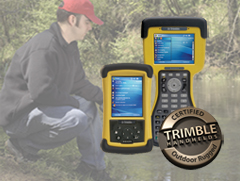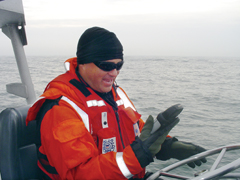Have you ever wished your Recon or Ranger could give you maps and directions to your next job? When I heard that Microsoft has released a beta of their new Search application, Live Search Mobile, I had to try it out.
The first thing to understand about this product is that the name “Search” in the title can be a bit confusing. To me, search brings up images of a classic search engine that returns web sites matching your keywords. However, Microsoft has taken a very broad view of search to include: maps, traffic, turn-by-turn directions, GPS integration and local business search tools.
The integration of all these search tools comes together very nicely in the application. If you are trying to find the phone number of a business, find a map of an area, get directions, or decide which interstate has less traffic, this application is for you. Here is what the startup page looks like.

Finding a business works quite well. Because the list of categories is geared toward consumer use, you have to enter the category by hand instead of choosing from a list. By clicking, “Map all” each location is shown on a map. You can also view traffic information on the map for larger cities (shown in red, yellow, green interstate highlighting).

Where all of these features come together is the integration with a GPS. To get setup, you will need to attach a GPS (Bluetooth, or Holux CompactFlash card) and a GPRS data connection (wired or Bluetooth to a cell phone) to your Recon. Using the hardware store search from above, I clicked on one of the entries, and requested “Directions to Here” starting from “My current location”. Using your current GPS position, the program generates a clear set of directions and shows them on a map.

With a Ram-Mount for your Recon you could even navigate to job sites with this handy feature. Although the program does not read the directions to you out-loud like high-end car navigation systems, the application moves the map to show your current position. This makes it possible to keep track of where you are on a map.
The greatest part about this application is that it is currently free from Microsoft. The program is still in beta, but I didn’t find any major features that didn’t work.
To run this program on your Recon or Ranger, first get set up with a GPS and a GPRS data connection. From Internet Explore on the device, visit http://wls.live.com and download the application. Within a minute or two you will turn your handheld computer into a handy street navigator. Just remember, your Recon may get you to the job site, but someone still has to do the work.


















